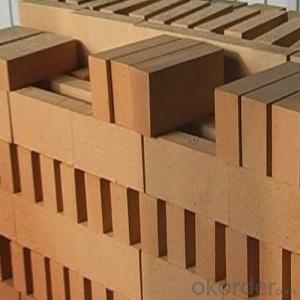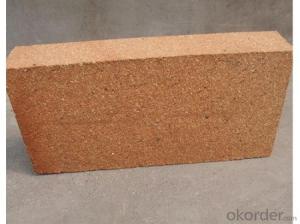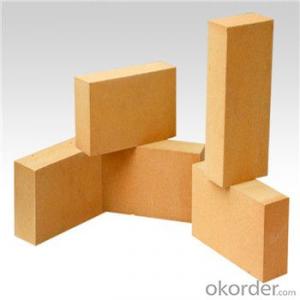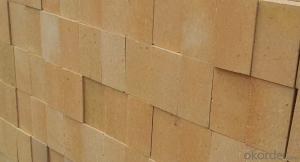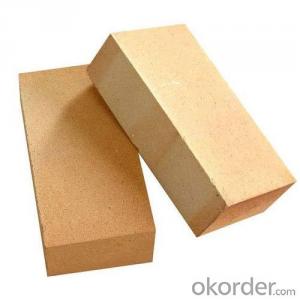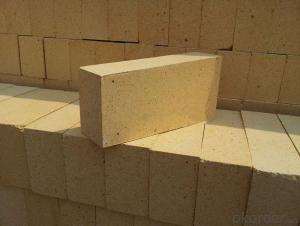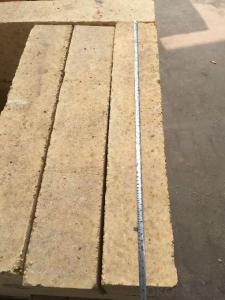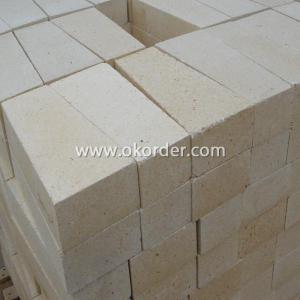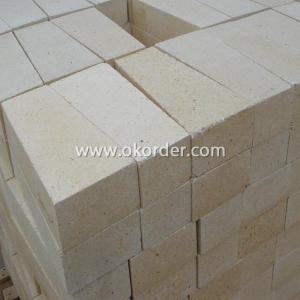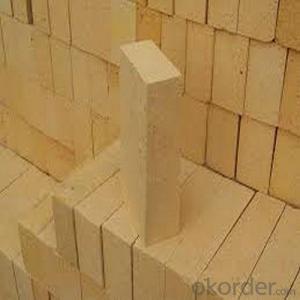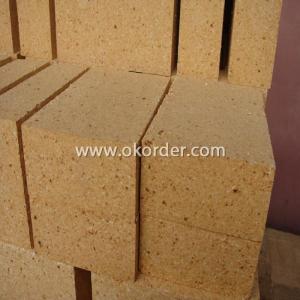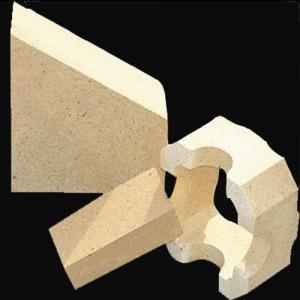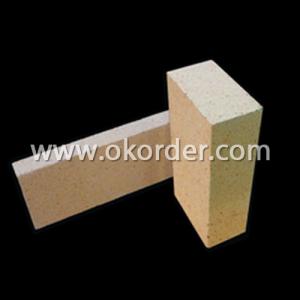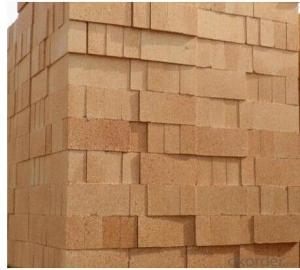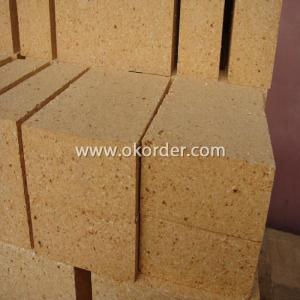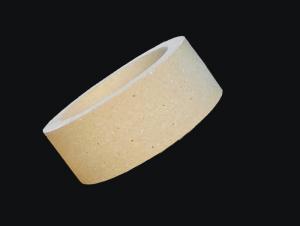Fireclay brick SK30
- Loading Port:
- China Main Port
- Payment Terms:
- TT OR LC
- Min Order Qty:
- -
- Supply Capability:
- 500000 pc/month
OKorder Service Pledge
OKorder Financial Service
You Might Also Like
General Information of Fireclay brick
Our corporation producesa comprehensive range of Fireclay bricks, with 30% to 55% alumina content, allof these bricks exhibit excellent performance.
Our Fireclaybricks are the final result of blending excellent fused alumina and silicon asthe main raw materials with cutting-edge technology, adding superfine powder,after mixing, drying, forming, in the high temperature shuttle kiln. We ensureyou that the Fireclay Bricks made by us possess high quality standard and havegone through all the complicated quality control parameters. Their durabilityand strength adds life to the structure and they have the capacity of bearinghigh temperature.
Feature of Fireclay Brick
Resistant tothermal shock, abrasion, chemical attack
High ability foranti-abrasion during work
Low shrinkagedegree under high temperature so as to maintaining integrity of the furnacelining
Low apparentporosity, and low Fe2O3 content to reduce the carbondeposit in the blowhole and avoid the bricks broken in case of expansion
Applications of Fireclay Brick
Fireclay brick is mainlyused in the part of throat, stack, hearth, bottom for blast furnace and thestack for a big blast furnace.
1. Carbon bakedfurnaces in the alumina industry
2. Preheat zonesand cyclones of rotary cement kilns
3. Insulation forglass tanks
4. Coke ovens
5. Blast furnaces
6. Reheatingfurnaces
7. Suspended roofs
8. Lime kilns
9. Chimney
Technical Data of Fireclay Brick SK30 | ||
Physical Properties: |
|
|
Refractoriness | ℃ | 1670 |
Permanent Linear Change(1400℃×3h)% | % | ±0.2 |
Apparent Porosity, % | % | ≤22 |
Cold Crushing Strength | Mpa | ≥20 |
Refractoriness Under Load (T0.6) | ℃ | ≥1250 |
Thermal Expansion, % | % | 0.8 |
Density | g/cm3 | 2.0~2.05 |
Chemical Analysis: |
|
|
Al2O3 | % | ≥34 |
Fe2O3 | % | ≤3.2 |
Note: | ||
- Q:What is the advantage of the ceramic fiber material compared with the refractory brick?
- Ceramic fiber material is heavier than refractory bricks, property of machinery operation, low heat capacity, and has high anti-stretchability and good thermal shock resistance, low thermal conductivity make its thermal insulation effect is ten times than refractory brick, it won't has crack in sudden coolness and heat, and the construction is much easier than that of refractory brick, not delaying the production.
- Q:Will the heat be taken away by the refractory brick
- No, refractory bricks can't be burnouted
- Q:What is refractory brick? What is refractory clay? ?
- Refractory bricks and refractory soil are all refractory materials. Generally they can be seen in the coke oven. The refractory brick is generally yellow. A steel brick is a kind of refractory brick. Its heavier several times than ordinary brick .
- Q:What is the coefficient of heat transfer for clay bricks?
- The coefficient of heat transfer is called the total heat transfer coefficient. The current standards and specifications of the state are uniformly named as heat transfer coefficients. The heat transfer coefficient K value refers to the stable heat transfer condition, both sides of retaining structure air temperature is 1 degrees (K, c), 1s in the area of 1 square meters of the heat transfer unit, is w / (M2 - degree (W/) m - K, where K can replace c).
- Q:Are there any good improvement measures for the always collapse of the previous vaulted tunnel kiln built by refractory bricks?
- refractory castable integrally casting
- Q:What material is good of refractory bricks?
- It can also be divided into a variety of kinds, it mainly depends on where it is used, each has its own advantages, neutral three categories of refractory bricks have a variety of materials
- Q:Should kiln be warmed before the ignition of the new furnace?
- New kiln should be slowly heated up, the time should be 20 days to more than 1 month!
- Q:Whether the cement kiln refractory bricks belong to hazardous waste or not?
- Refractory brick produce dust hazards if it is broken, It is also should be paid attention to that if is refractory brick containing chromium, which will easily produce Cr VI when met with water, Cr^6+ material produced by magnesia chrome bricks is difficult to be damaged in the environment, which in many cases will exist in nature for a long time, continue to endanger human health. Chromite, as the raw materials to make magnesia-chrome brick, often exists in the form of trivalence (Cr203), is not toxic, nor carcinogenic, but in the cement rotary kiln high temperature oxidation atmosphere, it reacts with alkali metal oxide in cement materials, will produce chromic acid and alkali acid which is harmful to people's health. There are MgOIn contained in broken magnesia-chrome bricks, whose water solution is weakly alkalinity and generally will not easily produce K2cr207. K2Cr04 is a kind of weak oxidaiblity chemical compound, which has high chemical stability. It is very difficult to be reverted to non-toxic trivalent chromium when it blends into the environment. In many cases, these chemical compounds containing Cr VIcompounds will exist in nature stably, causing long-term pollution to the environment. This kind of harm is sustainable. The second reason that is very serious is that the high grade chrome ore is less and less in the world, forcing refractory manufacturers to find and develop
- Q:How to count the number of loading refractory bricks?
- Use one meter by one meter wooden raft-towing: use one meter raft-towing to count: Known your brick is T-3 standard bricks, each four layers lies down 15 and sidewards is 4 =64; according to 3.4kg, 47 clay bricks can hold 10 to 12 layers. According to the upper limit, each raft-towing can hold 2.3 tons
- Q:What are the differences and uses of non clay bricks, non clay bricks and ordinary red bricks?
- Just bricks without claySuch as foam hollow bricks, straw bricks, and some other cement bonded solid, hollow bricks and so on
1. Manufacturer Overview |
|
|---|---|
| Location | |
| Year Established | |
| Annual Output Value | |
| Main Markets | |
| Company Certifications | |
2. Manufacturer Certificates |
|
|---|---|
| a) Certification Name | |
| Range | |
| Reference | |
| Validity Period | |
3. Manufacturer Capability |
|
|---|---|
| a)Trade Capacity | |
| Nearest Port | |
| Export Percentage | |
| No.of Employees in Trade Department | |
| Language Spoken: | |
| b)Factory Information | |
| Factory Size: | |
| No. of Production Lines | |
| Contract Manufacturing | |
| Product Price Range | |
Send your message to us
Fireclay brick SK30
- Loading Port:
- China Main Port
- Payment Terms:
- TT OR LC
- Min Order Qty:
- -
- Supply Capability:
- 500000 pc/month
OKorder Service Pledge
OKorder Financial Service
Similar products
New products
Hot products
Related keywords
